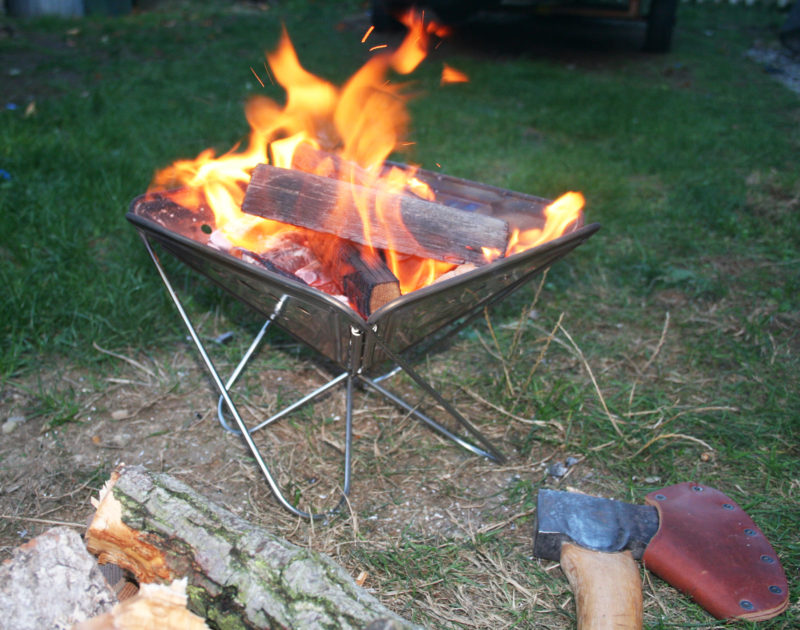 all photographs by the author
all photographs by the authorElevated and contained by the Pack & Carry Fireplace, this campfire leaves no trace.
By the time I graduated from high school I had studied Latin for five years. There wasn’t much call for it as a spoken language, but I was fascinated by what it revealed about English words. One that I found particularly telling was “focus.” It’s the Latin word for fireplace. When we stare into a fire, it is easy to focus on the flickering flames to the exclusion of everything else around us. At a fireplace we can easily drift into an almost meditative state of relaxed concentration. In the out-of-doors, campfires are an integral part of the restorative quality of the wilderness experience but unfortunately they can scar the landscape. I stopped making wilderness campfires years ago—I’d seen too many campsites spoiled by half-burned logs and black scars on the ground.
SnowPeak’s Pack & Carry Fireplace offers us a way to enjoy the benefits of a campfire and leave the land as we found it. It folds up for easy storage and transport and, made of heavy-duty stainless steel, it’s built to last. It has a heft that won’t appeal to backpackers but the durability that comes with its stout construction is well suited to coastal camp-cruising.

The sloped sides of the Fireplace make it self tending: Wood slips downward into the heart of the fire.
Folded, the fireplace is ¾″ thick; opened it’s an inverted pyramid propped up on four sturdy legs of 3/16″ stainless rod. There are rows of holes along the upper edges of the sides for airflow. The spaces along the hinged edges also allow for airflow without being so large that coals and ash readily fall through. If the wood used is broken, chopped, or sawn to fit the fireplace, the fire is self-tending—as the wood burns it gathers in the center. (I usually carry a hand-operated survival chainsaw. It makes quick work of wood too thick to break.) Left to burn itself out, the fire leaves behind just a handful of charcoal, easy to pack out or carry to another campsite for the next fire.
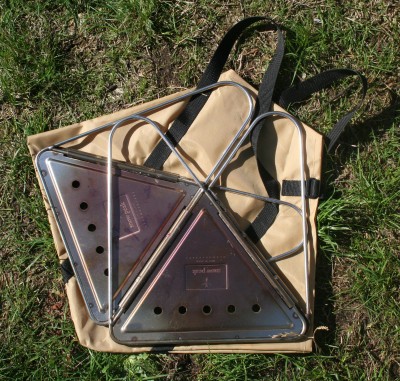
When the Fireplace is folded, none of its sooty surfaces are exposed so you can handle it and still keep your hands clean. The carrying case adds an extra measure of tidiness.
The fireplace comes with a nylon carrying case that keeps ash and soot separated from your other camping gear. There are two accessories for the stove that I didn’t have for review: a flat steel base and a cooking grill and a support for it. The base plate is meant to reflect radiant heat from the fireplace and keep it from damaging the ground. I used the stove, less the base, over dry grass and leaves and the ground directly under the stove was merely warm to the touch. The base would be quite useful for supporting the fireplace on sand, and perhaps even snow; the legs sink in and don’t provide much stability. The grill can be set at different levels to suit the cooking job.
The fireplace I tested is the smallest of three sizes offered by SnowPeak. It’s 11″ square, stands 8″ high, and weighs 4 lbs. The medium fireplace opens to 13 ¾″ and the large to 17 ¾″. The fire in the small fireplace burns in an area just under a square foot, so it’s a small fire, but it brought a pot of water to a boil, dried a pair of wet socks, cast a warm glow, and took the chill off the 45° night air. It didn’t throw off heat the way a campfire burning large chunks of wood does—the fireplace’s cluster of glowing embers is contained in a small area and radiates warmth rather than scorching heat. I could sit right by the fire and be pleasantly warm and, yes, sitting there I could not help but focus on the flickering flames. The Pack & Carry Fireplace could return me to an element of camping that I’ve often missed.![]()
Christopher Cunningham is the digital editor of Small Boats Monthly.
The small, medium, and large Pack & Carry Fireplaces area available from SnowPeak for $109.95, $149.95, and $189.95 respectively.
Is there a product that might be useful for boatbuilding, cruising or shore-side camping that you’d like us to review? Please email your suggestions.
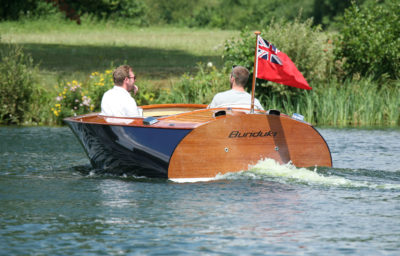
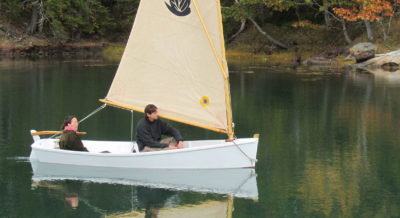
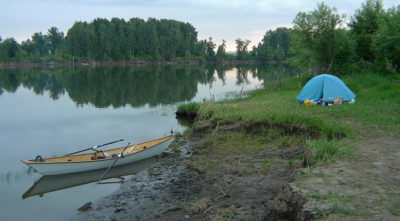
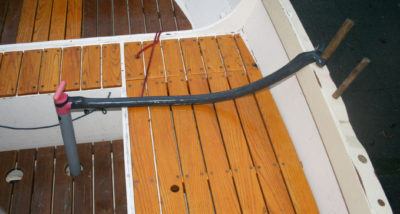
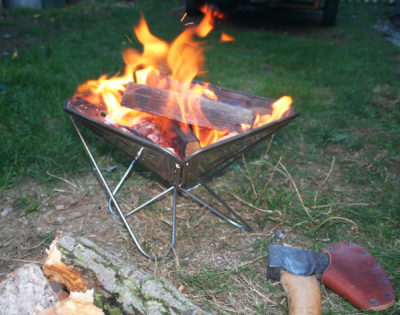
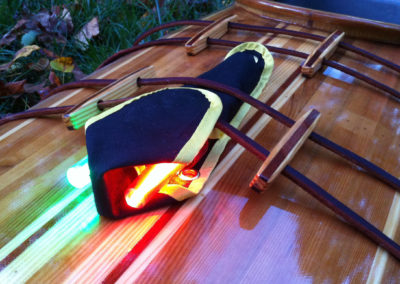
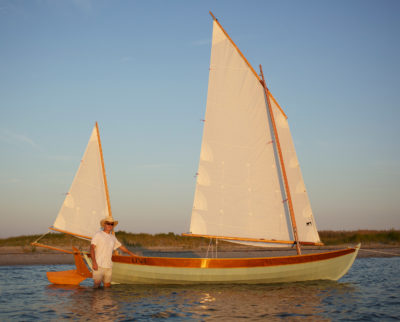
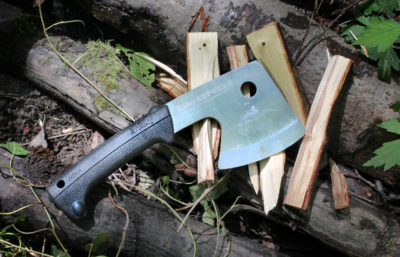
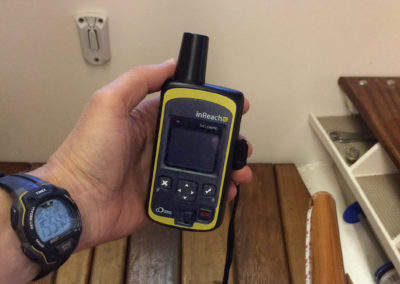
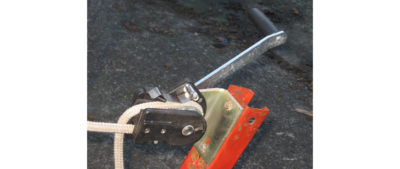
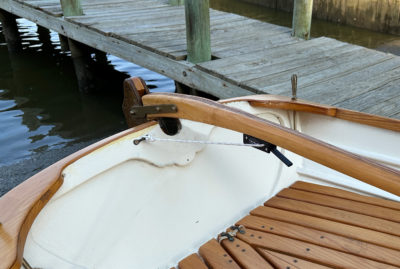
I also heartily endorse the leave-no-trace approach to being in the wild. I learned it from my Scout master when I was 10. Back then (1960) we would backpack into the Santa Ynez, CA, wilderness every Easter break. Our troop of 15 to 20 boys and two men would leave only one sign that we had been in three different camps during the week’s vacation. As we backed out of camp we would erase our tracks with a broom of dead fall tree branches. No fire rings, no black logs: Everything was burned down to ash, no charcoal. No tent flats, no garbage, no trace, except the barely perceptible broom strokes. The little bit of ash we generated was buried under a rock below the high water mark. Camp cruising must, of course, include some form of water-borne beast of burden. Given one of those, a thrifty packer could easily bring the Snow Peak Fireplace and all of the wood to be consumed by it. Then you could say you didn’t take anything from the land or leave anything behind on it.